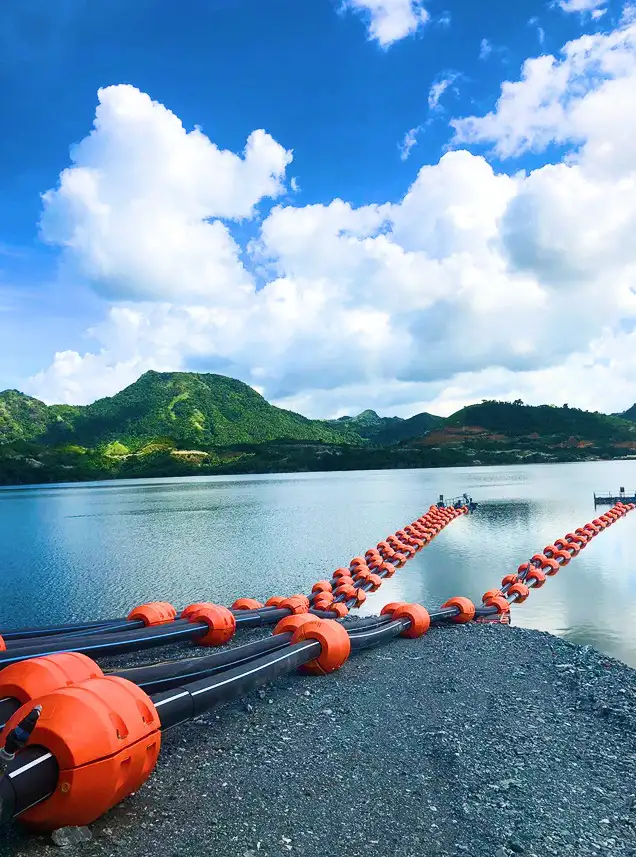Time: 2025-06-19 02:50:14 Source: Max Pipe
Injection molding is a widely used manufacturing process for producing plastic parts, and while it's less common for long, continuous pipes (which are typically made by extrusion), it's a primary method for creating pipe fittings and other complex, non-uniform pipe components.
Here's an introduction to injection molding processes for the production of pipes (specifically, pipe fittings):
Injection molding is a manufacturing technique where molten material, usually thermoplastic polymers, is injected under high pressure into a mold cavity. The material then cools and solidifies, taking the shape of the mold. This process is highly efficient for mass production of identical parts with complex geometries and high precision.
While continuous pipes are typically made by extrusion due to their uniform cross-section, pipe fittings (like elbows, tees, couplers, reducers, caps, etc.) have more intricate and varied shapes. Injection molding excels at producing these complex geometries with tight tolerances and excellent surface finishes, making it ideal for creating reliable connections in piping systems.
The injection molding process for pipe fittings typically involves the following stages, which form a continuous cycle:
Material Preparation and Drying:
Plastic raw materials, usually in granular or pellet form (e.g., PVC, PP, PE, ABS), are fed into a hopper.
Some materials, like PVC, can absorb moisture, which can lead to defects (bubbles, voids) in the final product. Therefore, materials may need to be dried in a dehumidifying or desiccant dryer before processing.
Melting (Plasticization):
The plastic pellets move from the hopper into a heated barrel containing a rotating screw.
The screw's rotation and the heaters along the barrel melt the plastic into a viscous, molten state. Precise temperature control is crucial to ensure proper melting without degrading the material. For PVC, typical melting temperatures range from 175°C to 190°C (345°F to 375°F).
Injection:
Once a sufficient amount of molten plastic is accumulated at the front of the screw (known as metering or shot size), the screw moves forward rapidly, forcing the molten material into the mold cavity under high pressure.
The injection speed and pressure are carefully controlled to ensure the mold is completely filled, capturing all intricate details and preventing defects like short shots or voids.
Holding/Packing:
After the mold cavity is filled, a holding (or packing) pressure is applied. This sustained pressure compensates for material shrinkage as it cools and solidifies, ensuring a dense and uniform part with accurate dimensions.
Cooling:
Cooling channels within the mold circulate a coolant (typically water) to rapidly cool the molten plastic.
The cooling time depends on the part's thickness, material type, and mold temperature. Adequate cooling is essential to prevent warping, deformation, or excessive shrinkage of the part upon ejection.
Mold Opening and Ejection:
Once the part has cooled and solidified sufficiently, the mold halves open.
Ejector pins push the solidified pipe fitting out of the mold cavity without damaging it.
Cycle Completion:
After ejection, the mold closes, and the machine prepares for the next injection cycle, repeating the process for continuous mass production.
Materials Commonly Used for Injection Molded Pipe Fittings:
A wide range of thermoplastics can be used for pipe fittings, each offering specific properties:
Polyvinyl Chloride (PVC): Very common for pipe fittings due to its chemical resistance, durability, cost-effectiveness, and good processability. It's often used for sanitary and storm sewer systems, and drinking water supply fittings.
Polypropylene (PP): Offers excellent chemical resistance, good heat resistance, and impact strength, making it suitable for various plumbing and industrial applications.
Polyethylene (PE) - HDPE, LDPE: Known for its excellent chemical resistance, flexibility, and durability. HDPE is commonly used for water supply and gas supply fittings.
Acrylonitrile Butadiene Styrene (ABS): Provides good strength, impact resistance, and dimensional stability, often used for drain, waste, and vent (DWV) systems.
Polyoxymethylene (POM) / Acetal: Known for its excellent mechanical properties, stiffness, and low friction, suitable for more demanding applications.
Nylon (PA): Offers high strength, toughness, and abrasion resistance, used in specific industrial applications.
High Precision and Consistency: Produces parts with tight tolerances and consistent quality, crucial for reliable pipe connections.
Design Flexibility: Allows for the creation of complex and intricate designs, including internal features, threads, and multi-component integration, which are common in pipe fittings.
Cost-Effective for Mass Production: Once the initial mold tooling cost is covered, the automated process offers low per-unit costs for high-volume runs.
Wide Material Selection: Accommodates various thermoplastics, enabling selection based on specific application requirements (e.g., chemical resistance, temperature rating, pressure).
Minimal Material Waste: The process is efficient, and often, any scrap or sprues can be reground and reused, reducing waste.
Good Surface Finish: Parts typically come out of the mold with a high-quality surface finish, often requiring little to no post-processing.
In summary, injection molding is a critical process in the production of plastic pipe fittings, leveraging its ability to create complex, high-precision components efficiently for various plumbing and industrial applications.
